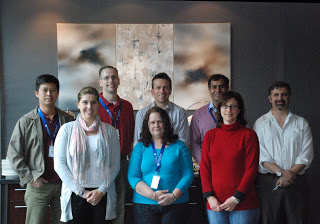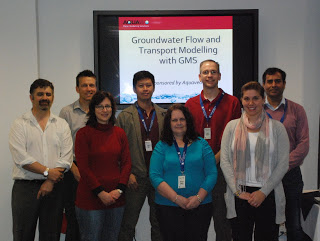Some of the more interesting accomplishments from the July 2011 sprint:
- Fixed over 29 bugs
- Did a live webinar on what's new in GMS 8.0 and 8.1. Unfortunately we don't have the recording posted yet but hope to soon.
- Posted a new video about interpolating MODFLOW layer elevations on our YouTube channel
- Completed phase one of the ADH interface for the Army Corp of Engineers
- Started the MODFLOW-NWT interface
- Finished the 3D grid display option to contour a second specified data set
- Fixed a few FEMWATER bugs
- More wiki clean up and progress on Wiki to PDF feature
- More manual testing of 64 bit GMS
- Assisted the consulting group on several projects
- Visited the University of Michigan to discuss an "Environmental and Ship Motion Forecasting" project for the U.S. Navy
- Added an image in the image gallery










